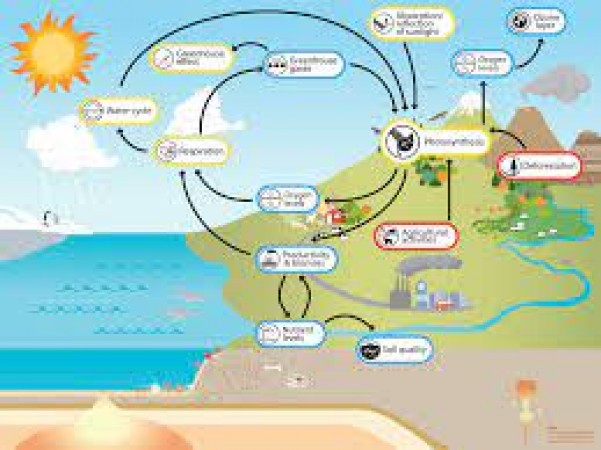
Carbon dioxide, often abbreviated as CO2, is a colorless and odorless gas that plays a significant role in Earth's atmosphere and various natural processes. This article aims to provide a comprehensive understanding of carbon dioxide, its sources, effects, and importance in our environment. Carbon dioxide is an essential component of Earth's atmosphere, comprising a small fraction of the air we breathe. While often portrayed as a harmful gas, it is essential for life on our planet and plays a crucial role in maintaining the delicate balance of our ecosystem.
Understanding Carbon Dioxide: The Basics
At its core, carbon dioxide is composed of one carbon atom bonded with two oxygen atoms, forming a chemical formula of CO2. This simple yet vital molecule is a natural byproduct of various natural processes, including respiration, volcanic activity, and the decay of organic matter.
Sources of Carbon Dioxide
Natural Sources: Volcanic eruptions, forest fires, and animal respiration release carbon dioxide into the atmosphere.
Human Activities: The burning of fossil fuels for energy, deforestation, and industrial processes are major sources of anthropogenic carbon dioxide emissions.
The Carbon Cycle: Nature's Balancing Act
The carbon cycle is a complex system that involves the exchange of carbon dioxide between the atmosphere, oceans, soil, and living organisms. It helps regulate the levels of carbon dioxide in the atmosphere, preventing extreme fluctuations.
The Greenhouse Effect and Global Warming
Carbon dioxide is a greenhouse gas, meaning it traps heat in the atmosphere. While the natural greenhouse effect is essential for maintaining a habitable climate, human activities have led to an enhanced greenhouse effect, causing global temperatures to rise—a phenomenon known as global warming.
Carbon Dioxide's Role in Photosynthesis
Plants utilize carbon dioxide during photosynthesis, a process in which they convert CO2 and sunlight into energy-rich molecules. This process not only sustains plant life but also produces oxygen, which is vital for all aerobic organisms.
Human Activities and Carbon Emissions
The industrial revolution marked a significant increase in carbon emissions due to the burning of fossil fuels. This release of carbon dioxide into the atmosphere has led to unprecedented levels of this gas, contributing to climate change.
Impacts of Excess Carbon Dioxide
Excessive carbon dioxide levels contribute to ocean acidification, which poses a threat to marine ecosystems. Additionally, rising global temperatures lead to melting ice caps, sea-level rise, and extreme weather events.
Mitigating Carbon Footprint: Solutions and Innovations
Renewable Energy Sources: Transitioning to solar, wind, and hydroelectric power reduces reliance on fossil fuels.
Reforestation: Planting trees helps absorb carbon dioxide from the atmosphere.
Energy Efficiency: Using energy more efficiently minimizes carbon emissions.
Carbon Capture and Storage
Carbon capture and storage (CCS) technologies aim to capture carbon dioxide emissions from industrial processes and power plants, then store them underground to prevent their release into the atmosphere.
The Future of Carbon Dioxide Levels
As the global population continues to grow, efforts to curb carbon emissions become more crucial. International agreements and policies, such as the Paris Agreement, strive to limit global temperature increases by reducing carbon dioxide emissions.
Carbon Offsetting: Taking Responsibility
Individuals and companies can offset their carbon emissions by investing in projects that reduce or capture an equivalent amount of carbon dioxide from the atmosphere, such as tree-planting initiatives or renewable energy projects.
Carbon Dioxide Regulations and Policies
Governments worldwide are implementing regulations to limit carbon emissions and encourage cleaner energy practices. These policies play a vital role in mitigating the impact of carbon dioxide on the environment.
Addressing Misconceptions about Carbon Dioxide
CO2 is Essential: Carbon dioxide is essential for life and natural processes; it's the excess that causes issues.
Not a Sole Culprit: While a significant contributor, carbon dioxide is not the only greenhouse gas responsible for climate change. carbon dioxide is a vital gas with both positive and negative effects on our planet. Understanding its role, sources, and impacts is essential for adopting sustainable practices to ensure a healthier environment for current and future generations.
Driving Excellence: A Comprehensive Review of the WagonR